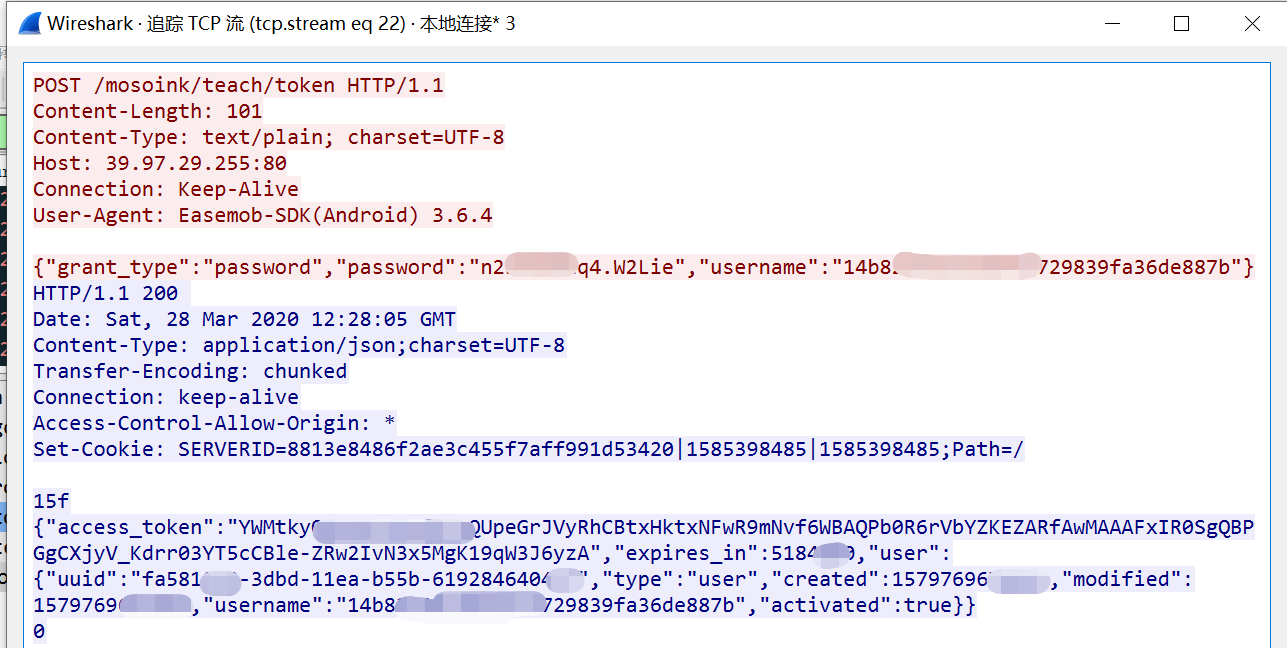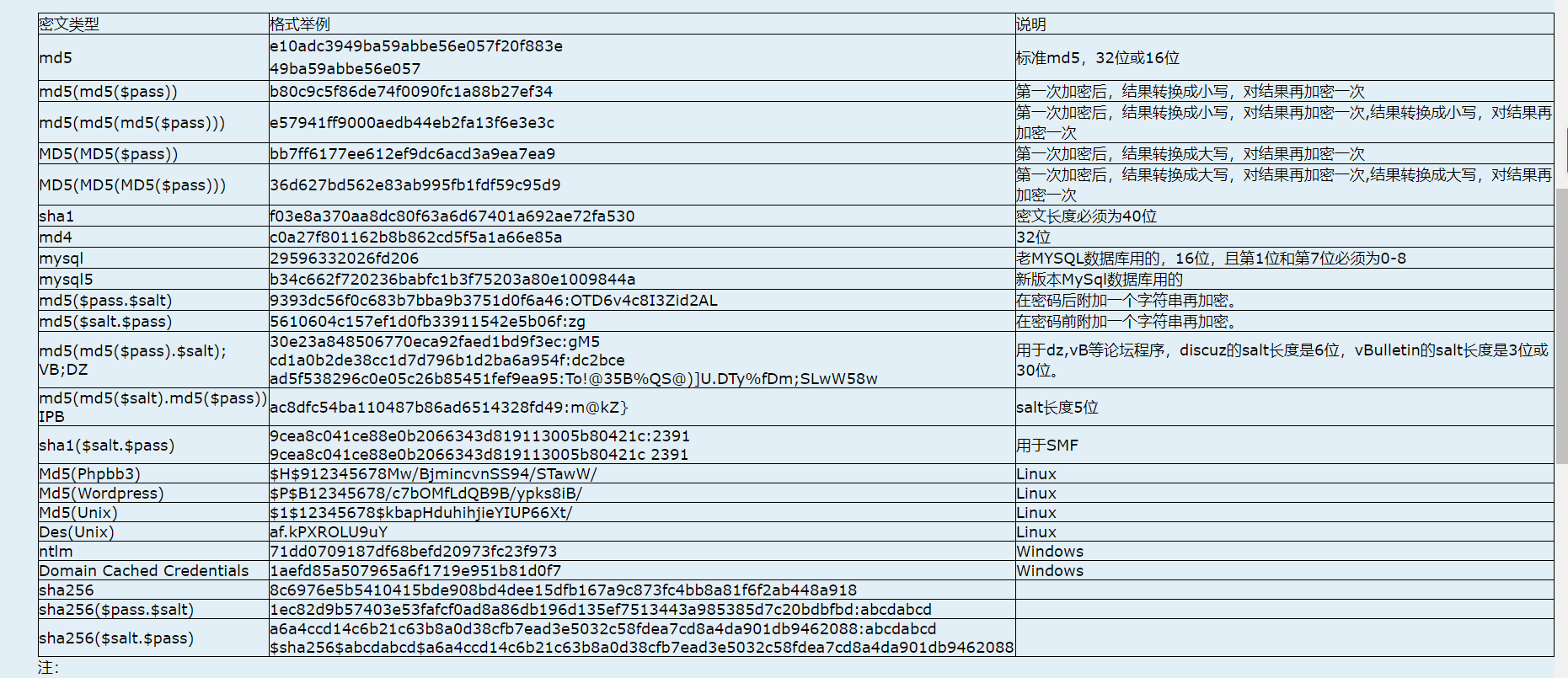作业实践
一、 每个人找一个抓包软件,分析其功能,设计的模块等,着重使用和分析,不建议用wireshark,编译过程可能比较难,也可挑战 。
当我面对这份题目的时候,我开头可以说是无从下手啊!源代码....SOS....但是我还是想着慢慢磨,一点点的了解吧!多种因素导致我只是肤浅的了解,代码研究并不是很通透。之后有时间的话这篇博客我会再次打造。
我再次看了下《网络攻防技术与实践》这本书,书中只进行了一部分的介绍。其他部分模块的代码是从网上搜集的!
Libpcap是类UNIX平台用户态下的抓包工具库,与内核态的BPF包嗅探与过滤机制相配合,为类UNIX平台上的应用程序提供标准的网络嗅探接口。Libpcap提供了独立于不同操作系统类型的标准接口,除了支持常用的C语言之外,还为其他多种高级编程语言包装了接口,包括Perl、Python、Ruby、Java等。Libpcap与BPF作为类UNIX平台下的网络嗅探标准接口支持,被广泛应用于大量网络相关的应用软件。Linux 下著名的 tcpdump 就是以它为基础的。
- libpcap主要的作用:
1)捕获各种数据包(网络流量统计)
2)过滤网络数据包(过滤掉本地上的一些数据,类似防火墙)
3)分析网络数据包(分析网络协议,数据的采集)
4)存储网络数据包(保存捕获的数据以为将来进行分析)
- libpcap 的抓包框架
pcap_lookupdev():函数用于查找网络设备,返回可被 pcap_open_live() 函数调用的网络设备名指针。
pcap_lookupnet():函数获得指定网络设备的网络号和掩码。
pcap_open_live(): 函数用于打开网络设备,并且返回用于捕获网络数据包的数据包捕获描述字。对于此网络设备的操作都要基于此网络设备描述字。
pcap_compile(): 函数用于将用户制定的过滤策略编译到过滤程序中。
pcap_setfilter():函数用于设置过滤器。
pcap_loop():函数 pcap_dispatch() 函数用于捕获数据包,捕获后还可以进行处理,此外 pcap_next() 和 pcap_next_ex() 两个函数也可以用来捕获数据包。
pcap_close():函数用于关闭网络设备,释放资源。
- Libpcap 抓包详细步骤
1、获取网络接口设备名 char *pcap_lookupdev(char *errbuf);得到可用的网络设备名指针
参数:errbuf:存放出错信息字符串,里面有个宏定义:PCAP_ERRBUF_SIZE,为错误缓冲区大小
返回值:成功返回设备名指针(第一个合适的网络接口的字符串指针);失败返回 NULL,同时,errbuf 存放出错信息字符串。
char *dev = pcap_lookupdev(error_content);
if(NULL == dev)
{
printf(error_content);
exit(-1);
}
2、获取网络号(ip 地址)和掩码int pcap_lookupnet(char *device,bpf_u_int32 *netp, bpf_u_int32 *maskp,char *errbuf );获取指定网卡的 ip 地址,子网掩码
参数:
device:网络设备名,为第一步获取的网络接口字符串(pcap_lookupdev() 的返回值 ),也可人为指定,如“eth0”。
netp:存放 ip 地址的指针,bpf_u_int32 为 32 位无符号整型
maskp:存放子网掩码的指针,bpf_u_int32 为 32 位无符号整型
errbuf:存放出错信息
返回值:成功返回 0,失败返回 -1
char *dev = pcap_lookupdev(error_content);
if(NULL == dev)
{
printf(error_content);
exit(-1);
}
bpf_u_int32 netp = 0, maskp = 0;
pcap_t * pcap_handle = NULL;
int ret = 0;
//获得网络号和掩码
ret = pcap_lookupnet(dev, &netp, &maskp, error_content);
if(ret == -1)
{
printf(error_content);
exit(-1);
}
3、打开网络接口 pcap_t *pcap_open_live( const char *device,int snaplen,int promisc,int to_ms,char *ebuf );打开一个用于捕获数据的网络接口
参数:
device:网络接口的名字,为第一步获取的网络接口字符串(pcap_lookupdev() 的返回值 ),也可人为指定,如“eth0”。
snaplen:捕获数据包的长度,长度不能大于 65535 个字节。
promise:“1” 代表混杂模式,其它非混杂模式。
to_ms:指定需要等待的毫秒数,超过这个数值后,获取数据包的函数就会立即返回(这个函数不会阻塞,后面的抓包函数才会阻塞)。0 表示一直等待直到有数据包到来。
ebuf:存储错误信息。
返回值:返回 pcap_t 类型指针,后面的所有操作都要使用这个指针。
char error_content[PCAP_ERRBUF_SIZE] = {0}; // 出错信息
char *dev = pcap_lookupdev(error_content); // 获取网络接口
if(NULL == dev)
{
printf(error_content);
exit(-1);
}
// 打开网络接口
pcap_t * pcap_handle = pcap_open_live(dev, 1024, 1, 0, error_content);
if(NULL == pcap_handle)
{
printf(error_content);
exit(-1);
}
4、获取数据包
const u_char *pcap_next(pcap_t *p, struct pcap_pkthdr *h);
int pcap_loop(pcap_t *p,int cnt,pcap_handler callback,u_char *user );
int pcap_dispatch(pcap_t * p, int cnt, pcap_handler callback, u_char * user);
- const u_char *pcap_next(pcap_t *p, struct pcap_pkthdr *h);捕获一个网络数据包,收到一个数据包立即返回
参数:
p:pcap_open_live()返回的 pcap_t 类型的指针
h:数据包头
返回值:
成功返回捕获数据包的地址,失败返回 NULL
- pcap_pkthdr 类型的定义如下:
struct pcap_pkthdr
{
struct timeval ts; // 抓到包的时间
bpf_u_int32 caplen; // 表示抓到的数据长度
bpf_u_int32 len; // 表示数据包的实际长度
}
const unsigned char *p_packet_content = NULL; // 保存接收到的数据包的起始地址
pcap_t *pcap_handle = NULL;
struct pcap_pkthdr protocol_header;
pcap_handle = pcap_open_live("eth0", 1024, 1, 0,NULL);
p_packet_content = pcap_next(pcap_handle, &protocol_header);
//p_packet_content 所捕获数据包的地址
printf("Capture Time is :%s",ctime((const time_t *)&protocol_header.ts.tv_sec)); // 时间
printf("Packet Lenght is :%d
",protocol_header.len); // 数据包的实际长度
// 分析以太网中的 源mac、目的mac
struct ether_header *ethernet_protocol = NULL;
unsigned char *p_mac_string = NULL; // 保存mac的地址,临时变量
ethernet_protocol = (struct ether_header *)p_packet_content; //struct ether_header 以太网帧头部
p_mac_string = (unsigned char *)ethernet_protocol->ether_shost;//获取源mac
printf("Mac Source Address is %02x:%02x:%02x:%02x:%02x:%02x
",*(p_mac_string+0),*(p_mac_string+1),*(p_mac_string+2),*(p_mac_string+3),*(p_mac_string+4),*(p_mac_string+5));
p_mac_string = (unsigned char *)ethernet_protocol->ether_dhost;//获取目的mac
printf("Mac Destination Address is %02x:%02x:%02x:%02x:%02x:%02x
",*(p_mac_string+0),*(p_mac_string+1),*(p_mac_string+2),*(p_mac_string+3),*(p_mac_string+4),*(p_mac_string+5));
-int pcap_loop(pcap_t *p,int cnt,pcap_handler callback,u_char *user ); 循环捕获网络数据包,直到遇到错误或者满足退出条件。每次捕获一个数据包就会调用 callback 指定的回调函数,所以,可以在回调函数中进行数据包的处理操作。
参数:
p:pcap_open_live()返回的 pcap_t 类型的指针。
cnt:指定捕获数据包的个数,一旦抓到了 cnt 个数据包,pcap_loop 立即返回。如果是 -1,就会永无休止的捕获,直到出现错误。
callback:回调函数,名字任意,根据需要自行起名。
user:向回调函数中传递的参数。
返回值:成功返回0,失败返回负数
- callback 回调函数的定义:
void callback( u_char *userarg, const struct pcap_pkthdr * pkthdr, const u_char * packet )
userarg:pcap_loop() 的最后一个参数,当收到足够数量的包后 pcap_loop 会调用callback 回调函数,同时将pcap_loop()的user参数传递给它
pkthdr:是收到数据包的 pcap_pkthdr 类型的指针,和 pcap_next() 第二个参数是一样的。
packet :收到的数据包数据
if( pcap_loop(pcap_handle, -1, ethernet_protocol_callback, NULL) < 0 )
{
perror("pcap_loop");
}
/*******************************回调函数************************************/
void ethernet_protocol_callback(unsigned char *argument,const struct pcap_pkthdr *packet_heaher,const unsigned char *packet_content)
{
unsigned char *mac_string; //
struct ether_header *ethernet_protocol;
unsigned short ethernet_type; //以太网类型
printf("----------------------------------------------------
");
printf("%s
", ctime((time_t *)&(packet_heaher->ts.tv_sec))); //转换时间
ethernet_protocol = (struct ether_header *)packet_content;
mac_string = (unsigned char *)ethernet_protocol->ether_shost;//获取源mac地址
printf("Mac Source Address is %02x:%02x:%02x:%02x:%02x:%02x
",*(mac_string+0),*(mac_string+1),*(mac_string+2),*(mac_string+3),*(mac_string+4),*(mac_string+5));
mac_string = (unsigned char *)ethernet_protocol->ether_dhost;//获取目的mac
printf("Mac Destination Address is %02x:%02x:%02x:%02x:%02x:%02x
",*(mac_string+0),*(mac_string+1),*(mac_string+2),*(mac_string+3),*(mac_string+4),*(mac_string+5));
ethernet_type = ntohs(ethernet_protocol->ether_type);//获得以太网的类型
printf("Ethernet type is :%04x
",ethernet_type);
switch(ethernet_type)
{
case 0x0800:printf("The network layer is IP protocol
");break;//ip
case 0x0806:printf("The network layer is ARP protocol
");break;//arp
case 0x0835:printf("The network layer is RARP protocol
");break;//rarp
default:break;
}
usleep(800*1000);
}
- int pcap_dispatch(pcap_t * p, int cnt, pcap_handler callback, u_char * user);
这个函数和 pcap_loop() 非常类似,只是在超过 to_ms 毫秒后就会返回( to_ms 是pcap_open_live() 的第4个参数 )
5、释放网络接口void pcap_close(pcap_t *p);关闭 pcap_open_live() 打开的网络接口(即其返回值,pcap_t 类型指针),并释放相关资源。注意,操作完网络接口,应该释放其资源。
参数:p:需要关闭的网络接口,pcap_open_live() 的返回值(pcap_t 类型指针)
返回值:无
// 打开网络接口
pcap_t * pcap_handle = pcap_open_live("eth0", 1024, 1, 0, error_content);
if(NULL == pcap_handle)
{
printf(error_content);
exit(-1);
}
//// ……
//// ……
pcap_close(pcap_handle); //释放网络接口
- 接收一个数据包:
#include <stdio.h>
#include <pcap.h>
#include <arpa/inet.h>
#include <time.h>
#include <stdlib.h>
struct ether_header
{
unsigned char ether_dhost[6]; //目的mac
unsigned char ether_shost[6]; //源mac
unsigned short ether_type; //以太网类型
};
#define BUFSIZE 1514
int main(int argc,char *argv[])
{
pcap_t * pcap_handle = NULL;
char error_content[100] = ""; // 出错信息
const unsigned char *p_packet_content = NULL; // 保存接收到的数据包的起始地址
unsigned char *p_mac_string = NULL; // 保存mac的地址,临时变量
unsigned short ethernet_type = 0; // 以太网类型
char *p_net_interface_name = NULL; // 接口名字
struct pcap_pkthdr protocol_header;
struct ether_header *ethernet_protocol;
//获得接口名
p_net_interface_name = pcap_lookupdev(error_content);
if(NULL == p_net_interface_name)
{
perror("pcap_lookupdev");
exit(-1);
}
//打开网络接口
pcap_handle = pcap_open_live(p_net_interface_name,BUFSIZE,1,0,error_content);
p_packet_content = pcap_next(pcap_handle,&protocol_header);
printf("------------------------------------------------------------------------
");
printf("capture a Packet from p_net_interface_name :%s
",p_net_interface_name);
printf("Capture Time is :%s",ctime((const time_t *)&protocol_header.ts.tv_sec));
printf("Packet Lenght is :%d
",protocol_header.len);
/*
*分析以太网中的 源mac、目的mac
*/
ethernet_protocol = (struct ether_header *)p_packet_content;
p_mac_string = (unsigned char *)ethernet_protocol->ether_shost;//获取源mac
printf("Mac Source Address is %02x:%02x:%02x:%02x:%02x:%02x
",*(p_mac_string+0),*(p_mac_string+1),*(p_mac_string+2),*(p_mac_string+3),*(p_mac_string+4),*(p_mac_string+5));
p_mac_string = (unsigned char *)ethernet_protocol->ether_dhost;//获取目的mac
printf("Mac Destination Address is %02x:%02x:%02x:%02x:%02x:%02x
",*(p_mac_string+0),*(p_mac_string+1),*(p_mac_string+2),*(p_mac_string+3),*(p_mac_string+4),*(p_mac_string+5));
/*
*获得以太网的数据包的地址,然后分析出上层网络协议的类型
*/
ethernet_type = ntohs(ethernet_protocol->ether_type);
printf("Ethernet type is :%04x ",ethernet_type);
switch(ethernet_type)
{
case 0x0800:printf("The network layer is IP protocol
");break;//ip
case 0x0806:printf("The network layer is ARP protocol
");break;//arp
case 0x0835:printf("The network layer is RARP protocol
");break;//rarp
default:printf("The network layer unknow!
");break;
}
pcap_close(pcap_handle);
return 0;
}
- 接收多个数据包:
#include <stdio.h>
#include <pcap.h>
#include <arpa/inet.h>
#include <time.h>
#include <stdlib.h>
#define BUFSIZE 1514
struct ether_header
{
unsigned char ether_dhost[6]; //目的mac
unsigned char ether_shost[6]; //源mac
unsigned short ether_type; //以太网类型
};
/*******************************回调函数************************************/
void ethernet_protocol_callback(unsigned char *argument,const struct pcap_pkthdr *packet_heaher,const unsigned char *packet_content)
{
unsigned char *mac_string; //
struct ether_header *ethernet_protocol;
unsigned short ethernet_type; //以太网类型
printf("----------------------------------------------------
");
printf("%s
", ctime((time_t *)&(packet_heaher->ts.tv_sec))); //转换时间
ethernet_protocol = (struct ether_header *)packet_content;
mac_string = (unsigned char *)ethernet_protocol->ether_shost;//获取源mac地址
printf("Mac Source Address is %02x:%02x:%02x:%02x:%02x:%02x
",*(mac_string+0),*(mac_string+1),*(mac_string+2),*(mac_string+3),*(mac_string+4),*(mac_string+5));
mac_string = (unsigned char *)ethernet_protocol->ether_dhost;//获取目的mac
printf("Mac Destination Address is %02x:%02x:%02x:%02x:%02x:%02x
",*(mac_string+0),*(mac_string+1),*(mac_string+2),*(mac_string+3),*(mac_string+4),*(mac_string+5));
ethernet_type = ntohs(ethernet_protocol->ether_type);//获得以太网的类型
printf("Ethernet type is :%04x
",ethernet_type);
switch(ethernet_type)
{
case 0x0800:printf("The network layer is IP protocol
");break;//ip
case 0x0806:printf("The network layer is ARP protocol
");break;//arp
case 0x0835:printf("The network layer is RARP protocol
");break;//rarp
default:break;
}
usleep(800*1000);
}
int main(int argc, char *argv[])
{
char error_content[100]; //出错信息
pcap_t * pcap_handle;
unsigned char *mac_string;
unsigned short ethernet_type; //以太网类型
char *net_interface = NULL; //接口名字
struct pcap_pkthdr protocol_header;
struct ether_header *ethernet_protocol;
//获取网络接口
net_interface = pcap_lookupdev(error_content);
if(NULL == net_interface)
{
perror("pcap_lookupdev");
exit(-1);
}
pcap_handle = pcap_open_live(net_interface,BUFSIZE,1,0,error_content);//打开网络接口
if(pcap_loop(pcap_handle,-1,ethernet_protocol_callback,NULL) < 0)
{
perror("pcap_loop");
}
pcap_close(pcap_handle);
return 0;
}
过滤数据包 (过滤数据包的方法主要都是基于 BSD Packet Filter( BPF ) 结构的。libpcap 利用 BPF 来过滤数据包。)
- 设置过滤条件
BPF 使用一种类似于汇编语言的语法书写过滤表达式,不过 libpcap 和 tcpdump 都把它封装成更高级且更容易的语法了,具体可以通过 man tcpdump查看:

src host 192.168.1.177 //只接收源 ip 地址是 192.168.1.177 的数据包
dst port 80 //只接收 tcp/udp 的目的端口是 80 的数据包
not tcp //只接收不使用 tcp 协议的数据包
tcp[13] == 0x02 and (dst port 22 or dst port 23) //只接收 SYN 标志位置位且目标端口是 22 或 23 的数据包( tcp 首部开始的第 13 个字节)
icmp[icmptype] == icmp-echoreply or icmp[icmptype] == icmp-echo //只接收 icmp 的 ping 请求和 ping 响应的数据包
ehter dst 00:e0:09:c1:0e:82 //只接收以太网 mac 地址是 00:e0:09:c1:0e:82 的数据包
ip[8] == 5 //只接收 ip 的 ttl=5 的数据包(ip首部开始的第8个字节)
- 应用 BPF 过滤规则
int pcap_setfilter( pcap_t * p, struct bpf_program * fp );应用 BPF 过滤规则,简单理解为让过滤生效
参数:
p:pcap_open_live() 返回的 pcap_t 类型的指针
fp:pcap_compile() 的第二个参数
返回值:成功返回 0,失败返回 -1
下面的程序演示了如何过滤数据包,我们只接收目的端口是 80 的数据包:
#include <pcap.h>
#include <time.h>
#include <stdlib.h>
#include <stdio.h>
void getPacket(u_char * arg, const struct pcap_pkthdr * pkthdr, const u_char * packet)
{
int * id = (int *)arg;
printf("id: %d
", ++(*id));
printf("Packet length: %d
", pkthdr->len);
printf("Number of bytes: %d
", pkthdr->caplen);
printf("Recieved time: %s", ctime((const time_t *)&pkthdr->ts.tv_sec));
int i;
for(i=0; i<pkthdr->len; ++i)
{
printf(" %02x", packet[i]);
if( (i + 1) % 16 == 0 )
{
printf("
");
}
}
printf("
");
}
int main()
{
char errBuf[PCAP_ERRBUF_SIZE], * devStr;
/* get a device */
devStr = pcap_lookupdev(errBuf);
if(devStr)
{
printf("success: device: %s
", devStr);
}
else
{
printf("error: %s
", errBuf);
exit(1);
}
/* open a device, wait until a packet arrives */
pcap_t * device = pcap_open_live(devStr, 65535, 1, 0, errBuf);
if(!device)
{
printf("error: pcap_open_live(): %s
", errBuf);
exit(1);
}
/* construct a filter */
struct bpf_program filter;
pcap_compile(device, &filter, "dst port 80", 1, 0);
pcap_setfilter(device, &filter);
/* wait loop forever */
int id = 0;
pcap_loop(device, -1, getPacket, (u_char*)&id);
pcap_close(device);
return 0;
}
二、2)找一个网站或者搭建一个本地网站,登录网站,并嗅探,分析出账号和密码,结果截图1-2张。(3分)(可以用邮箱、各类博客、云班课,只能分析自己的账号,严禁做各类攻击,否则后果自负。)
首先,启动Wireshark,进入本地一个网站(http://www.wshangq.com/ ),注册并登录。

用dig查看一下该网站的IP

查看Wireshark,使用命令http.request.method== "POST"筛选,可以完完整整的看到我的用户名和密码。。。(密码千万不要设一个,否则不法分子撞库破解后可能会干坏事哦!)

三、加分项2分:注意本次加分项不加到额外10分里,加到本次实验中。例如,本次实验7分,算上加分可得9分。(抓取手机App的登录过程数据包,分析账号和密码。可以用邮箱、各类博客、云班课,只能分析自己的账号,严禁做各类攻击,否则后果自负。)
此次,我用手机连接电脑热点,登录云班课APP时,Wireshark捕获到的结果,同样用http.request.method== "POST筛选,发现我的用户名和密码是一些乱七八糟的字符,但是他一定是经过加密之后结果,也就是说根据这些只要我费点时间把他一一解密,完全是可以得到用户名和密码的!哇偶


抱着试一试的心情,我打开了某加密算法反向查询网站(https://www.cmd5.com/ ), 本来打算自己查查看,最后没查到。。。(下面是它支持的密文类型及格式)

温馨提示:以后千万不要连接陌生WLAN,有可能会使不法分子有机可乘!!
四、参考文献
使用WireShark嗅探网站登陆密码
wireshark密码嗅探侵入后台管理系统
wireshark的基本学习
Linux 网络编程—— libpcap 详解